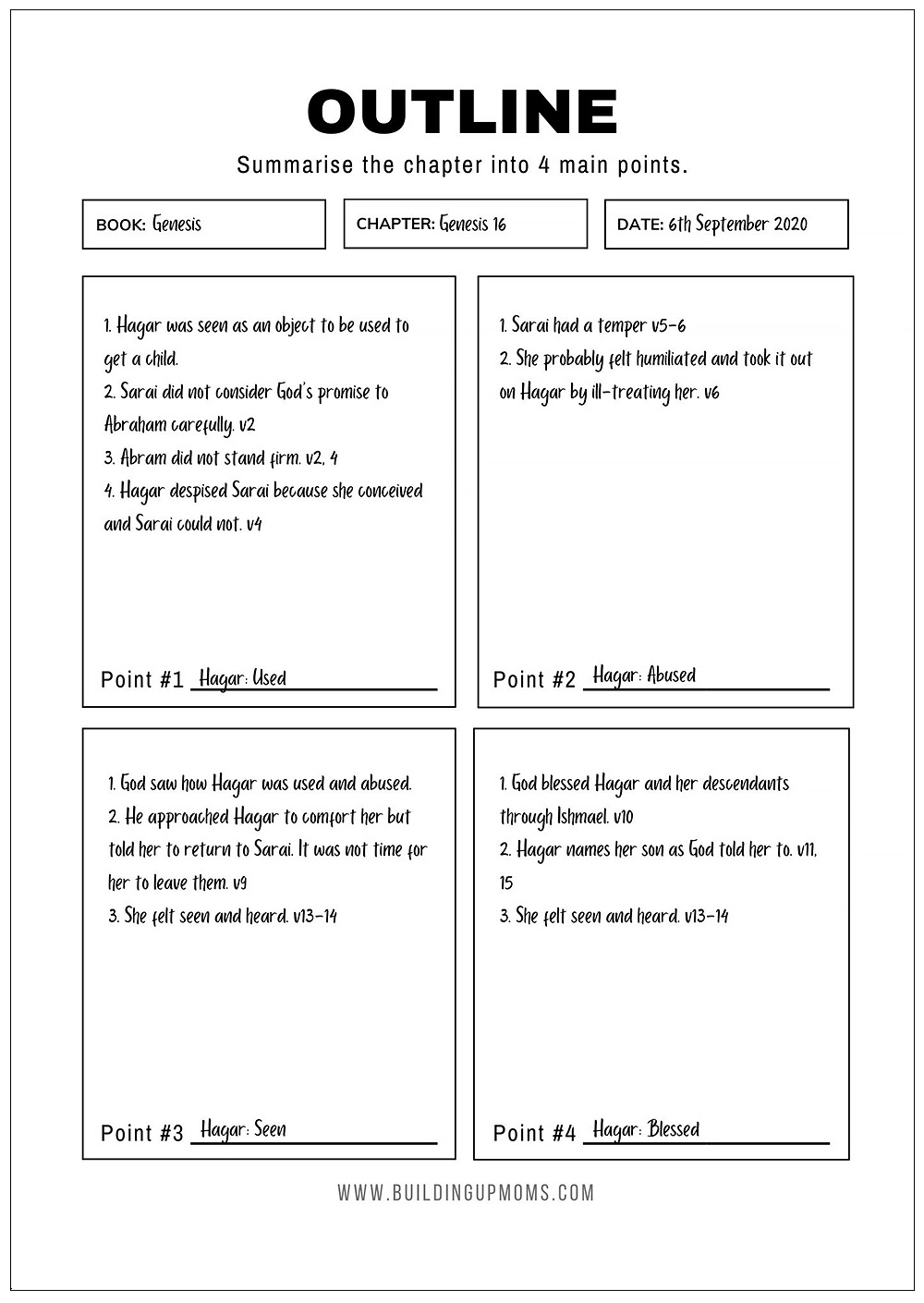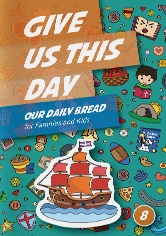
It is said that the person who teaches learns more than the person being taught. This is so true, especially when it comes to teaching the Bible to our children. And yet, most of us shrink back from the idea of teaching the Bible to our children.
Why? Perhaps it’s because we feel ill-equipped to take up the role of Bible teacher to our children. Perhaps we don’t even know where or how to start, and would rather have this done by the pastor or Sunday School teacher. After all, aren’t they more qualified to teach the Bible?
But I’d like to encourage you to consider otherwise. With so many Bible study books and programmes available, both free and paid, we can actually teach the Bible to our children. It really isn’t as daunting as we think it is!
Just Start Reading!
One simple way is to buy a packaged or boxed Bible study curriculum and follow it—lock, stock, and barrel. This was what we did in the beginning. When you don’t know where or how to start, this is an easy way.
The other way is to teach the Bible with—well, the Bible!
Give Us This Day #8
Get a copy of our latest family devotional!
Our latest resource, Give Us This Day #8, is now available.
Every month, we roll out a new resource for families. Subscribe to our email updates, and be the first to get a copy!
Just pick up the Bible and read through it with your children systematically, book by book. This is what I have discovered to be one of the best ways to familiarise our children with God’s Word. No watering it down or overcomplicating it—just read the Bible as it is presented.
No watering it down or overcomplicating it—just read the Bible as it is presented.
But you may ask: What if we come across a passage that is difficult to understand? This is where a good commentary comes in. There are many useful commentaries out there, as well as websites such as gotquestions.org and bible.org. I’ve found David Guzik’s enduringword.com particularly useful, as it also contains a wide range of biblical resources.
If you’re not sure whether these are aligned with the doctrines of your church or denomination, do approach your pastor and ask him for recommendations. I believe he will be more than happy to point you to his favourite resources.
My husband and I have enjoyed the process of going through the Bible book-by-book and chronologically. It not only allows us to get to know the Bible in a more intimate manner, but also allows us to get a big-picture overview of God’s salvation plan.
Keep It Simple
Let me share with you some simple tips on how we have done it with our kids:
1. Use ready resources:
All we have needed to study the Bible is just a Bible, some worksheets (which you can design or download for free), and a commentary, which is helpful for those difficult-to-understand passages. Maps of Bible locations and a Bible dictionary can also be helpful, though not critical. These days, there are a plethora of online resources, many of them free.
2. Keep the main thing the main thing
The main purpose in teaching the Bible to our children is for them to get familiar and comfortable with the Bible, beyond the usual Sunday School stories. We are not training them to be Bible scholars or theologians—well, not at this point, anyway. So, we just need to keep things simple.
3. Start at the very beginning
When we first started using this Bible study method, we started with the book of Genesis. It seemed perfect: not only is Genesis the very first book of the Bible, but it is also full of exciting Bible stories that many children are familiar with. This helps to build our own confidence in teaching, as well as their interest in learning before building up to the more difficult books later on.
4. Use the worksheet
After reading each chapter, I will ask my children to fill up an “outline” worksheet, to summarise the chapter in four main points (For more information on these printable worksheets, visit Serene’s blog at www.buildingupmoms.com/odb-bible-worksheets). This helps to break down the chapter to the child. Sometimes, you may have more than four points; at other times, less. Remember to keep it simple!
Each point can then have a few sub-points. When my kids were younger, they would draw out the main points. When they got older, they could progress to copying the points I wrote on a white board. Later, I could just dictate to them the points I wanted them to note.
5. Read the Bible aloud
To get the children to participate, you can get them to take turns to read the Bible out, aloud. It’s not only good practice for their oral exams, but also ensures that they pay attention and do not drift off.
And that’s it! I did this Mondays to Fridays with my kids—read a chapter, fill up the worksheet, and we were done.
It is a very simple way of teaching the Bible to our children without over-complicating matters. Then, as they progress and mature, we can add on other worksheets that get them to do some research on topics and characters that are relevant to the chapters covered, or fill up a commentary worksheet at the end of each main section of the biblical book.


Examples of outline worksheets used by Serene to help her kids
understand the main points of each chapter of the Bible.
For more information on these printable worksheets, visit Serene’s blog at
www.buildingupmoms.com/odb-bible-worksheets/
Learn Along with the Children
As the parent-teacher, this method of teaching my children the Bible forced me to read the Bible for myself and find out the answers to my own questions before I could teach it to the children. I learnt as much as—if not more than—the children in this manner. It is really rewarding.
I’ve also discovered a few truths:
Don’t underestimate our children. You’d be surprised by how much kids can understand. And even if they don’t fully understand something at that point, it will come back to them later when they need it. What you are doing is laying down a strong foundation.
It’s never too early or too late. It is never too early to get our children acquainted with the Bible. When they are toddlers and pre-schoolers, you can start with the Bible stories of Noah and the Ark, and David and Goliath. But as they mature, we need to move from feeding them milk to solid food.
You’d be surprised by how much kids can understand.
It is also not too late if you have not done this with your older children. Just start where you are, and keep going. God’s Word never returns void to Him (Isaiah 55:11). It will do what it needs to do when it is read and released.
Just Start Now!
Take it slow but be consistent. By keeping things simple, teaching the Bible to children can be done every night before bedtime, or every morning before everyone leaves for work or school. But if you find my method still too daunting, get a packaged curriculum and just do it—even if it’s just 15 minutes a day. Bit by bit, it will all add up.
As parents, we are in a privileged position to help our children learn to understand and love the Word of God for themselves.
Whatever method you choose, may I encourage you that teaching the Bible to your children is a worthwhile investment of your time. As parents, we are in a privileged position to help our children learn to understand and love the Word of God for themselves.
As we read and study the Bible for ourselves, we receive life and wisdom from Him. As we teach it to our children, we impart life and wisdom to them.
May you be blessed as you study the Bible for yourself to teach it to your children and their children!




